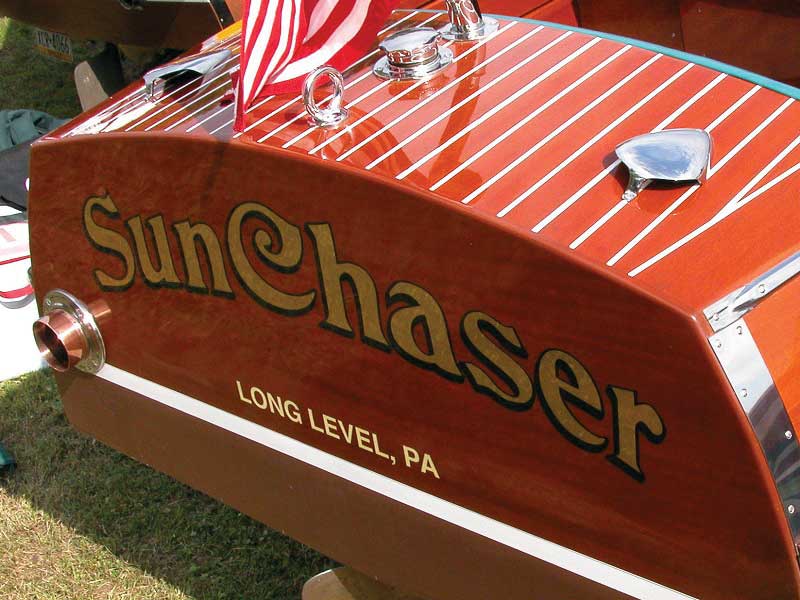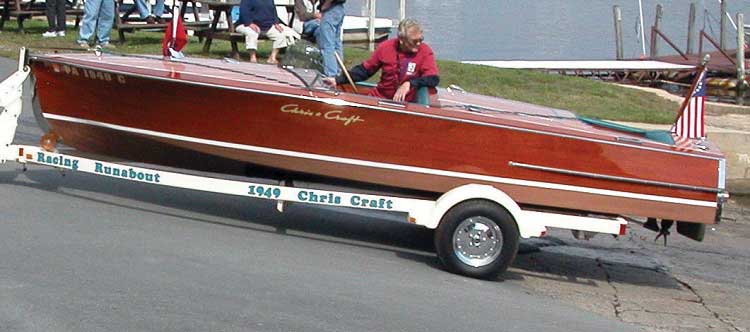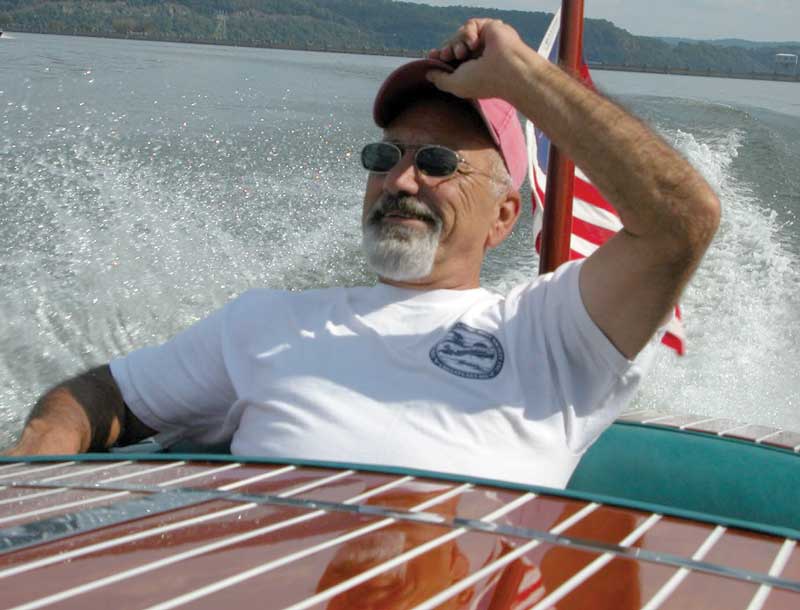Here’s a boat that offers an incomparable feeling as you slice across the water. The bow stays down, and the ride is smoother than any other Chris-Craft wooden boat of this size.

From 1948 to 1954, Chris-Craft produced this 19-foot Racing Runabout. These boats were built sleek and had larger engines. Together those factors achieved a stunning speed as high as 50 mph, which led to its reputation as Chris-Craft’s “sports car” boat. This model was a hit, and Chris-Craft built a total of 503 of them during that six-year period.
These post-war Racing Runabouts were loosely based on the 19-foot Special Race Boats of 1936 and 1937. Chris-Craft built 51 of those earlier racers, which were actually two inches longer and an inch wider in the beam.
This model Racing Runabout is being restored at Jerry LeCompte’s Dockside Boat Works in nearby Easton, MD. He displayed the boat at the St. Michaels Antique and Classic Boat Show, and his storyboard content contributed a few details to this article. By the way, Jerry does great work. I have seen his boat’s decks and other seams still tight with top-show quality several years after he performed his restoration magic, in addition to using the boat regularly on the Chesapeake Bay.

Here’s some additional insight about those post-World War II Chris-Craft boats. War production had ended, but good mahogany wood and other materials were in short supply. According to LeCompte, one of these Chris-Craft racers arrived at his shop cedar planked with a plywood deck. In other words, she was painted, not stained and varnished, because the cedar wood did not look right with a bright finish.
It would be smart to point out that by the time World War II ended, the Christopher Smith family that owned Chris-Craft had been through several years of tough times. Boatbuilding was their family’s livelihood, not just a hobby.
They had shown strong growth and good profits in the boat business until the Great Depression took its toll. The company made $308,000 in 1929 but only $51,204 in 1930. Chris-Craft went into the black again in 1936, with a profit of $213,131. Although the model offerings had been reduced significantly during those challenging years, 97 models were featured in its 1937 catalogue.
In the span of only a few years, World War II started. Production changed to a mix of cost-plus and a small profit. Anything over that was turned back to the government. It was a time when everyone in the United States did what they could for the war effort. At a high point, a record 602 Chris Crafts were shipped to the military in one month. Despite material shortages for the war effort in armor plating, engines, and brass castings, Chris-Craft survived and is going strong today.
Chris-Craft didn’t identify the specific construction materials it used to build its boats during this post-war period. That’s because they never knew what they’d need to substitute. Lumber has been mentioned as the longest lasting shortage.

Now, let’s get back to the boat test and a great time on the water. The boat maneuvered smoothly out of the slip, carefully to avoid creating a wake that would disturb other boats. Once on the Bay, we fully opened the throttle. We roared into the late afternoon, the acceleration jamming me back into the red vinyl cushions.
The long sleek bow had its racy caulk lines lifted high out of the water. Phosphorescent spray flamed by the low freeboard like galaxies of stars. I was thrilled! This must be what astronauts felt, shooting though space. She ran like a champion let loose in her element.
It was another WOW when we made a turn. Perhaps the phrase, “she turned on a dime and gave you change” best describes that experience.
It is just such memories that have made the 19-foot Chris-Craft Racing Runabout one of the most popular classic boats in the United States, according to Wilson W. Wright, the former executive director of the Chris-Craft Antique Boat Club, who said: “They were the Corvettes, the Thunderbirds of their era.’”
And like their automotive counterparts, they can fetch high prices, as much as $70,000 for a high show-quality boat with original hardware and motor.
By Chris “Seabuddy” Brown